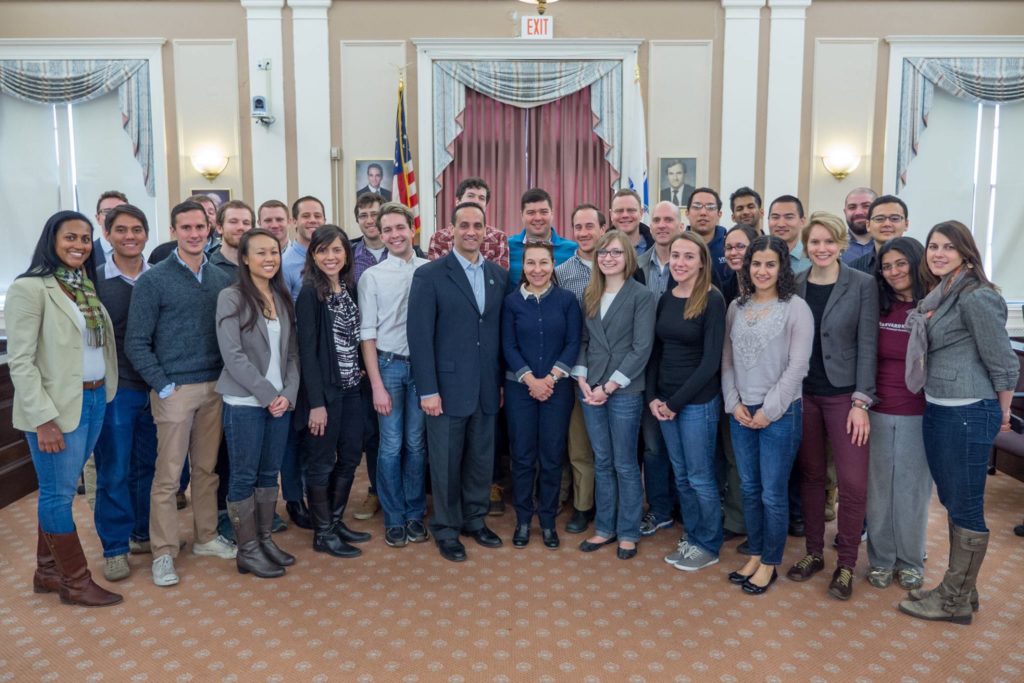Four decades ago, he was a wide-eyed kid marveling at the capabilities of the IBM 5150 purchased by his dad and the Apple IIe at school. He was later a Rappaport Fellow analyzing the allocation of funds at the City of Somerville Police Department as part of the Applied Field Lab at Harvard Kennedy School. And today, Richardson serves as a senior program officer for the Bill & Melinda Gates Foundation, where he optimizes digital learning experiences for students from historically marginalized communities.
Yes, he understands that modern technology is, at its core, an efficiency-booster and practical necessity in a business-minded world. But his focus is on how those same applications can be used as a catalyst for change to better serve the greater good.
“I’ve always been curious,” he said, “about figuring out what specific technologies will benefit the public domain.”
After earning a B.A. in International Studies from Emory University in 2000, Richardson briefly worked in cybersecurity, then moved to Washington D.C. to work for the United States Senate Committee on the Environment for Public Works. That experience inspired him to further explore how data and technology could be deployed in government by enrolling at Harvard’s Kennedy School.
“I had no experience in education or state and local government,” he said. “I couldn’t even tell you how a city was organized.”
Between his first and second year at HKS, Richardson had the opportunity to attend a guest lecture with then-Baltimore Mayor Martin O’Malley – an experience that changed his career path. Mayor O’Malley, borrowing from a New York City Police Department model which shared data between departments to create better operational systems, had recently begun a similar program in Baltimore called CitiStat, and Richardson was awed.
“I thought it was the coolest thing ever,” he said. “It was taking a disciplined approach to using data on the front lines of public service and enhancing a leader’s ability to do better by their citizens. I saw his presentation and thought, this is what I want to do.”
That evening, Richardson and O’Malley shared a few pints at an Irish pub in Somerville’s Davis Square. The next morning, Richardson received a call from the Mayor’s chief of staff, asking him to work for the City of Baltimore’s summer fellowship program.
During his ensuing interview with the Mayor, Richarson was asked where in Baltimore he wanted to work.
“Sir, what’s the worst problem you have?” he responded.
The conversation led to a successful summer in the city’s school department, where Richardson worked setting performance metrics for different departments in Baltimore Public Schools.
“It worked very well,” he said.
Richardson built on the experience during the following semester at HKS. Professor Linda Bilmes (“one of the most supportive people I’ve ever met,” he says) was offering the Rappaport Applied Field Lab course, and Somerville Mayor Joe Curtatone was in the process of bringing the Baltimore data model to his city with SomerStat – setting performance metrics for everything from filling potholes to the police department to vaccinations.
Through his Rappaport Fellowship, Richardson worked directly with the Somerville Police Department to develop a performance budget that included a mix of operational and financial information. His two most significant takeaways: 1. The city spent an inordinate amount of money on police overtime; and 2. Not all city employees were open to embracing new ideas and implementing change.
“We were caught up in our fantasy that our technical and analytic expertise would allow us to walk into these places and everybody would be equally inspired,” Richardson said. “What we ended up reflecting on was not how well our metrics were put together, but that we were these suit-wearing Harvard Kennedy School folks expecting everybody to defer to our expertise. Looking back on it, that’s a pretty dumb thing to do.”




